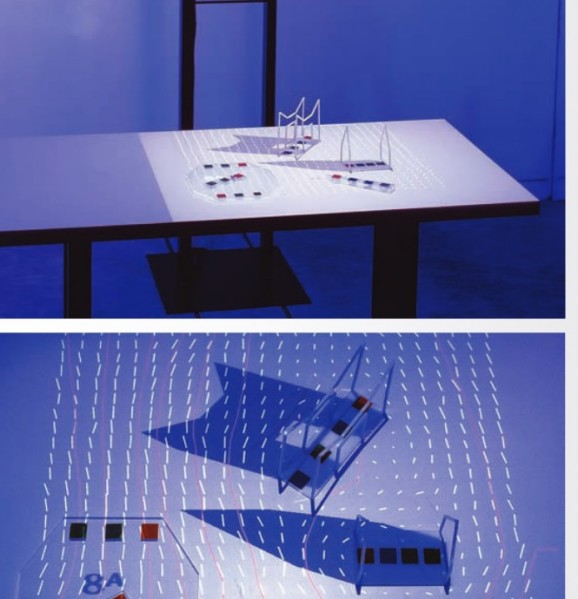Dynamic Interactive Shape Display Demonstrates The Awesomeness Of Art Meeting Science
This article is more than 2 years old
Well, this is the neatest thing I’ve seen since that incredible projection mapping experiment. It makes me think of the tables with pins that you’d see in museums, where you’d press your hands against them to push the pins into various shapes.
The ability to manipulate and interact with tangible objects remotely, and to interact physically with digital information, is absolutely incredible to me, and would seem to enable limitless artistic possibilities, not to mention 3-D modeling and graphing, interface development, teaching math, video conferencing, and more. I’m also constantly stunned at the seemingly endless uses for Kinect.

The bridge between the virtual and the physical has been crossed here. It really does look like magic. I can’t help wondering what scientists from back in the day would think, especially when watching the display give physical form to algebraic equations. The display is even more impressive when it begins tangibly representing electronic information, such as a bar graph, from a tablet.
The inFORM display was developed by MIT’s Tangible Media Group, whose mission is to “seamlessly couple the dual world of bits and atoms by giving physical form to digital information.” Yep, that about sums it up. The group’s first tangible user interface project was called “Tangible Bits”, which it presented at a conference in 1997. The project addressed the “challenge of reconciling our dual citizenships in the physical and digital worlds,” as our eyes, ears, and sensory capabilities are engaged in ubiquitous digital information while our bodies remain in the physical world. In a way, virtual reality addresses the same dichotomy, but in so doing makes the physical world moot — at least when it comes to amping up the virtual experience in such a way that it incorporates the body. The Tangible Media Group offers a different approach that seems to differently represent, if not better maintain, balance between the two worlds.

The biggest challenge in working on Tangible Bits was the disparity between the inelasticity of atoms and the flexibility of bits. In other words, their Tangible User Interface couldn’t really change the properties or forms of physical objects in real time, which, of course, isn’t a problem in the digital realm. To address this limitation, the group undertook a project called “Radical Atoms,” which “assumes a hypothetical generation of materials that can change form and appearance dynamically,” much like pixels on a screen. The trick was finding the right material that can be manipulated and transformed physically, and which also has a digital mode that allows a link between the change in physical form and the data state. The project was a huge step in human-material interaction by linking digital information to a physically manifested counterpart that supports interaction. You can see early versions of inFORM developed by the project.

A Tangible User Interface, or in this case, a Material User Interface, will change the way we interact with the digital world by giving us a physical means of doing that. I could see this giving way to new leaps in architecture, construction, and even music-making, as demonstrated by the video below. And the gap between science and magic narrows some more.













Leave a comment
You must log in to post a comment